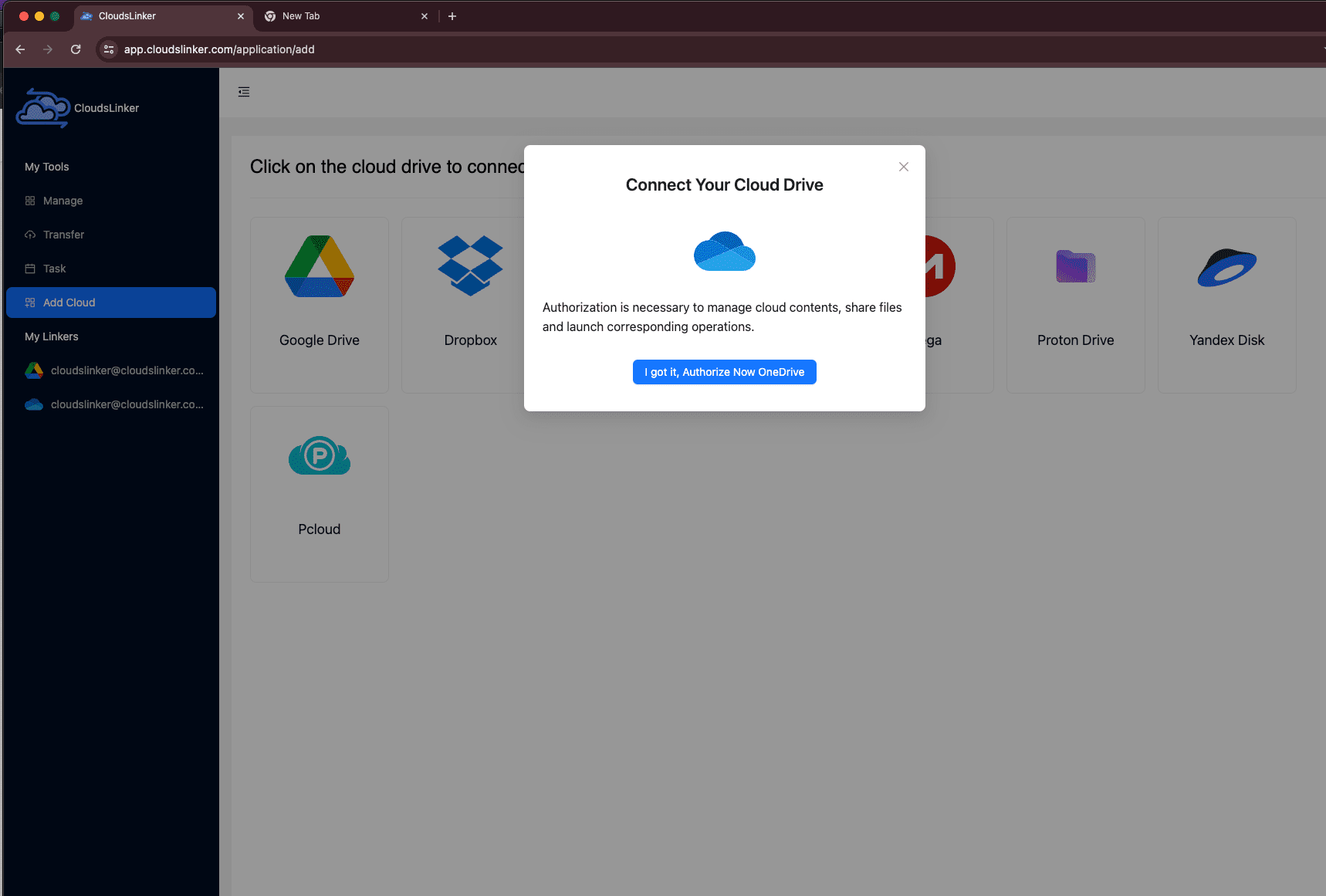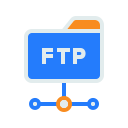Seamless File Transfer from OneDrive to Cloudflare R2
Discover how to easily move your files from OneDrive to Cloudflare R2. This guide walks you through every step to help you take full advantage of Cloudflare’s modern storage platform.
Introduction
With cloud infrastructure becoming the backbone of modern productivity, many users are seeking faster, more scalable, and cost-effective solutions. This article explores the key strengths of OneDrive and Cloudflare R2, and offers a practical guide for transferring your files from OneDrive to R2 without hassle.
Quick Navigation
A Closer Look at OneDrive
OneDrive, Microsoft’s cloud storage service, has long been valued for its deep integration with Windows and Microsoft 365. It makes file access, synchronization, and collaboration remarkably smooth for both individuals and teams.
However, as businesses scale and need more control over data distribution and API-level flexibility, Cloudflare R2 becomes an appealing alternative, offering object-based storage built for modern workloads.
Key Features of OneDrive
- Cross-Device Syncing: OneDrive automatically keeps your files consistent across computers, mobile devices, and the web, ensuring a unified workspace.
- Microsoft 365 Integration: Seamlessly connects with Word, Excel, PowerPoint, and Teams, making collaboration effortless and real-time.
- Smart Sharing Tools: Allows users to share folders and files securely with permissions, expiration links, and access tracking.
- File Versioning: Maintains a version history of your documents, enabling quick recovery from unwanted edits or deletions.
Why Users Choose OneDrive
OneDrive shines in personal and team collaboration, with reliable syncing and user-friendly management. Still, for large-scale file hosting, static asset delivery, or data-heavy applications, Cloudflare R2 offers greater flexibility and predictable costs.
- Ease of Use: Its clean, familiar interface ensures that even new users can upload, share, and manage files without friction.
- Built-In Security and Compliance: Backed by Microsoft’s enterprise-grade infrastructure, OneDrive protects data with strong encryption and compliance standards.
Understanding Cloudflare R2
Cloudflare R2 is a next-generation object storage solution designed to eliminate egress fees while maintaining top-tier performance. It’s ideal for developers and organizations that need to store, distribute, and process data globally without unpredictable costs.
By combining scalability, affordability, and seamless integration with Cloudflare’s global network, R2 allows you to serve data directly from the edge — perfect for modern web apps, APIs, and backup workflows.
Distinctive Features of Cloudflare R2
- Egress-Free Data Access: R2 removes the burden of egress fees when data is accessed through Cloudflare services, helping you control long-term expenses.
- S3-Compatible Interface: Fully supports the S3 API standard, allowing tools like rclone or custom integrations to connect effortlessly.
- High Scalability: Handles vast amounts of data with consistent performance, making it suitable for everything from backups to web delivery.
- Advanced Encryption and Access Control: Keeps your data safe through server-side encryption, granular access policies, and strong authentication mechanisms.
- Integration with Cloudflare Workers: R2 works natively with Cloudflare Workers, enabling you to build powerful, serverless workflows that process data at the edge.
Benefits of Migrating to Cloudflare R2
- Lower Costs at Scale: Say goodbye to unexpected egress fees. R2’s pricing model ensures transparency, even for high-traffic or globally accessed data.
- Developer-Friendly Flexibility: Its API-first approach and S3 compatibility make integration with modern apps and workflows straightforward.
- Global Reach and Reliability: R2’s tight integration with Cloudflare’s worldwide network ensures low-latency access, redundancy, and near-instant data delivery to users anywhere.
Why Move from OneDrive to Cloudflare R2?
Shifting your files from OneDrive to Cloudflare R2 can redefine the way you manage and store data. With R2’s scalable infrastructure and transparent pricing, it offers a modern approach to handling growing digital workloads:
- Elastic and Cost-Efficient Storage: Cloudflare R2 stands out with its flexible, pay-as-you-grow model that lets you scale storage capacity seamlessly. Unlike OneDrive’s rigid subscription tiers, R2’s structure gives you more freedom to manage costs while expanding your data footprint effortlessly.
- Robust Security and Data Integrity: R2 incorporates end-to-end encryption and stringent access controls that go beyond traditional user-level permissions. Compared to OneDrive, R2 provides enterprise-grade durability and protection, ensuring your data remains secure across global operations.
- Advanced File Management and Accessibility: With an API-first design and S3 compatibility, Cloudflare R2 delivers fine-grained control over file organization and retrieval. This level of flexibility far exceeds what OneDrive’s consumer-oriented interface can offer, especially for large-scale datasets or automated workflows.
- Granular Sharing and Access Controls: Cloudflare R2 allows you to tailor access policies at the bucket or object level, with token-based permissions and expiring links. This provides a more precise and secure way to share content than OneDrive’s conventional sharing system.
Choosing Cloudflare R2 over OneDrive isn’t merely changing storage providers — it’s stepping into a more developer-friendly, cost-efficient, and secure ecosystem. Its elasticity, zero egress fees, and enterprise-level protection make it a superior long-term platform for modern cloud operations.
Preparing for the Move to Cloudflare R2
Before you initiate your transfer from OneDrive to Cloudflare R2, a bit of preparation ensures everything migrates smoothly and efficiently. Here’s how to set up your accounts and organize your data for the transition:
- Verify Access and Permissions: Ensure your OneDrive account is accessible and that you have the necessary admin or file-owner rights. At the same time, create your Cloudflare R2 bucket and generate an API token with read/write privileges — these credentials will be required during migration.
- Clean Up and Structure Your Files: Review your OneDrive folders and remove outdated or redundant data. Organizing your directory structure in advance makes it easier to map folders to R2 buckets later, improving consistency and reducing clutter.
- Plan for Transfer Efficiency: While R2 handles large data volumes easily, preparing file batches or segmenting your transfer into logical groups can reduce errors and speed up the process. This approach also lets you test your R2 integration before committing to a full migration.
Proper preparation—verifying permissions, organizing data, and planning transfer stages—ensures a seamless migration from OneDrive to Cloudflare R2. Taking the time to structure your files ahead of time allows you to take full advantage of R2’s scalability, security, and automation features for long-term efficiency.
Step-by-Step Tutorial: Moving Files from OneDrive to Cloudflare R2
Step 1: Download Your Files from OneDrive
Begin by signing in to your OneDrive account using your browser. Navigate to the folders or files you wish to migrate. Select them, click the **Download** button, and OneDrive will compress the selection into a ZIP archive. Once the download is complete, extract the ZIP file on your local computer so the files are ready for upload.

Step 2: Log In to Cloudflare R2
Next, open your browser and head to the Cloudflare Dashboard. After signing in, navigate to the **R2** section under the **Storage** tab. If this is your first time using R2, create a new bucket where you’ll store your migrated files. To keep your data secure, make sure two-factor authentication (2FA) is enabled on your Cloudflare account.
Step 3: Upload Your Files to Cloudflare R2
Inside your R2 bucket, click **Upload** and choose the files or folders you extracted from OneDrive. Cloudflare R2 supports bulk uploads, so you can move large amounts of data efficiently. Once the upload starts, you can monitor progress directly in the dashboard. Larger files will automatically upload in parallel chunks, ensuring a fast and reliable transfer.
By transferring files manually from OneDrive to Cloudflare R2, you maintain full control over your data. This approach takes advantage of Cloudflare’s scalable infrastructure and eliminates dependency on third-party sync tools—ideal for users seeking performance, transparency, and long-term data stability.

Optimizing Cloud Data Storage with Cloudflare R2 via CloudsLinker
Introducing CloudsLinker:
CloudsLinker simplifies cloud data management by enabling direct, secure transfers between OneDrive and more than 30 cloud platforms, including Cloudflare R2. Built around cloud-to-cloud transfer automation, it ensures reliability, security, and efficient use of bandwidth. CloudsLinker is particularly effective for large file migrations, thanks to its powerful synchronization engine and intuitive task control interface. For more detailed guidance, visit our Knowledge Base.
Step 1: Connect Your OneDrive Account to CloudsLinker
Log into your CloudsLinker account and select **Add Cloud**. Choose OneDrive from the list of supported services, then authorize CloudsLinker to access your OneDrive files. Once connected, your OneDrive directories will appear within the CloudsLinker interface, ready to be selected as a data source for migration.
Step 2: Configure Cloudflare R2 in CloudsLinker
Sign into your Cloudflare dashboard and open the **R2** storage section. Copy your Account ID from the control panel, then go to **Manage R2 API Tokens** to begin creating an API key. You’ll use these credentials to connect Cloudflare R2 to CloudsLinker.

Step 3: Generate a New API Token
In the R2 API Tokens page, click **Create Token**. Give your token a recognizable name and configure its permissions to allow read and write access for your chosen R2 bucket. Avoid setting restrictive IP rules so CloudsLinker can perform transfers smoothly without connectivity issues.

Step 4: Save Your R2 Credentials
After creating the token, note down the **Access Key ID**, **Secret Access Key**, and your Cloudflare R2 endpoint. For regional endpoints, use https://<ACCOUNT_ID>.eu.r2.cloudflarestorage.com (EU) or https://<ACCOUNT_ID>.fedramp.r2.cloudflarestorage.com (FedRAMP). These credentials are essential for completing the integration with CloudsLinker.

Step 5: Add Cloudflare R2 to CloudsLinker
Return to CloudsLinker and select **Add Cloud** again. Choose Cloudflare R2, then enter the Access Key ID, Secret Access Key, and Endpoint you just obtained. After saving, R2 will appear alongside your OneDrive connection, fully integrated and ready for data transfer.

Step 6: Set Up Your OneDrive to Cloudflare R2 Transfer
Go to the **Transfer** panel in CloudsLinker. Select OneDrive as the source and Cloudflare R2 as the destination. You can then choose which folders or files to migrate and configure preferences like transfer mode (copy or move), file filters, and scheduled execution for automated tasks.

Step 7: Start the Migration Process
Once the setup is complete, initiate the transfer. CloudsLinker performs all operations server-to-server, meaning no bandwidth is consumed on your local device. You can monitor real-time progress and review completed tasks directly from the dashboard.
Step 8: Verify Your Files in Cloudflare R2
When the migration finishes, log in to Cloudflare R2 to confirm that all files have successfully transferred. Check your bucket structure, ensure file integrity, and verify accessibility. Your data is now securely stored in R2, ready for global access and edge delivery.
Maximizing the Power of Cloudflare R2 After Migration
Streamlining File Management in Cloudflare R2
Once your files are safely stored in Cloudflare R2, organizing and managing them efficiently will help you get the most out of your new cloud environment:
- Create a clear folder hierarchy: Establish an organized structure for your R2 buckets and directories. Categorizing your data by type, project, or usage ensures faster access and better control as your storage grows.
- Utilize Cloudflare R2’s secure sharing features: Take advantage of Cloudflare R2’s fine-grained sharing options. Manage file access through permissions, temporary links, and expiry settings to maintain full control over who can view or download your data.
- Enable object versioning: Turn on versioning within your R2 buckets to keep historical copies of files. This allows you to restore previous versions when needed and safeguard against accidental overwrites or deletions.
Strengthening Data Security in Cloudflare R2
Protecting your files is just as important after migration as during transfer. Apply these security practices to ensure long-term data safety in Cloudflare R2:
- Activate multi-factor authentication (MFA): Add an additional layer of protection by enabling MFA on your Cloudflare account. This significantly lowers the risk of unauthorized access even if credentials are compromised.
- Update credentials regularly: Rotate your passwords and API tokens periodically to minimize exposure and keep your account secure against evolving threats.
- Review sharing permissions routinely: Make it a habit to audit your bucket permissions and revoke unnecessary access. Keeping your sharing settings tight ensures that only approved users can handle sensitive files.
Boosting Productivity with Cloudflare R2
Beyond storage, Cloudflare R2 can become a central part of your productivity and collaboration workflow when used effectively:
- Use the Cloudflare R2 dashboard efficiently: Access, upload, and organize your data directly from the intuitive Cloudflare dashboard. Its clean interface makes managing large file sets simple and quick.
- Integrate with other cloud tools: Connect R2 with automation platforms or developer tools to streamline file handling, backups, and deployment workflows. The S3-compatible API makes integrations easy.
- Tailor your configuration: Adjust storage settings and lifecycle rules to automatically archive or delete unused files. This customization keeps your R2 buckets efficient and cost-effective over time.
Frequently Asked Questions: Migrating from OneDrive to Cloudflare R2
How can I keep my files secure while transferring them to Cloudflare R2?
What advantages does Cloudflare R2 have over OneDrive?
Can I automate the OneDrive to Cloudflare R2 migration?
How do I minimize data loss risks during transfer?
Will transferring files to Cloudflare R2 incur extra costs?
Video Tutorial: Moving Files from OneDrive to Cloudflare R2
Want to see the full process in action? Watch our step-by-step video tutorial on how to migrate your data from OneDrive to Cloudflare R2. This guide walks you through every stage — from setup to verification — making it easy to follow whether you’re a beginner or an experienced user. Check it out here 👇
Conclusion
Migrating from OneDrive to Cloudflare R2 opens the door to a more flexible, developer-friendly, and high-performance cloud environment. By following this guide, you can ensure your data moves securely while setting yourself up for long-term scalability.
Online Storage Services Supported by CloudsLinker
Transfer data between over 44 cloud services with CloudsLinker
Didn' t find your cloud service? Be free to contact: [email protected]
Further Reading
Effortless FTP connect to google drive: Transfer Files in 3 Easy Ways
Learn More >
Google Photos to OneDrive: 3 Innovative Transfer Strategies
Learn More >
Google Photos to Proton Drive: 3 Effective Transfer Techniques
Learn More >











































